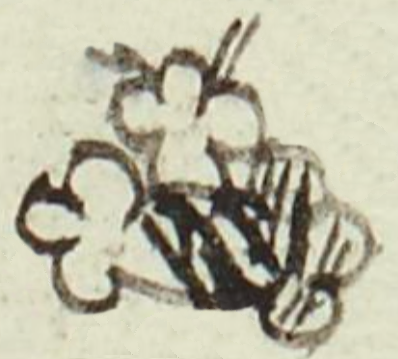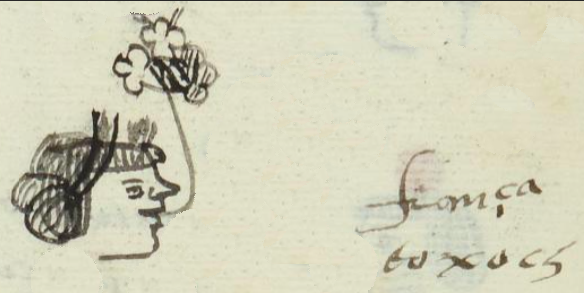Texoch (MH632v)
This black-line drawing of the compound glyph for the personal name Texoch (perhaps “Stone Flower,” a medicinal plant, attested here as a woman’s name) shows a horizontal stone (tetl) with its usual curly ends and its diagonal stripes that alternate dark and yellow across its middle section. Coming up from the stone is a flower (xochitl) with three visible petals and what seem to be two pistils or stamens coming off the top, leaning left and leaning right.
Stephanie Wood
A very beautiful example of the texochitl, a medicinal plant, appears in Book 11, folio 141v, of the Florentine Codex. See the Digital Florentine Codex, https://florentinecodex.getty.edu/book/11/folio/141v/images/76c72961-104.... In that painting, the flowering plant also sits on a stone glyph.
Stephanie Wood
fran.ca
texoch
Francisca Texoco
Stephanie Wood
1560
Jeff Haskett-Wood
flores, piedras, gente, nombres de mujeres, viudas

texoch(itl), a medicinal plant, https://nahuatl.wired-humanities.org/content/texochitl
te(tl), stone, https://nahuatl.wired-humanities.org/content/tetl
xoch(itl), flower, https://nahuatl.wired-humanities.org/content/xochitl
Flores de la Gente, o Flores en Piedra
Stephanie Wood
Matrícula de Huexotzinco, folio 632r, World Digital Library, https://www.loc.gov/resource/gdcwdl.wdl_15282/?sp=347&st=image.
This manuscript is hosted by the Library of Congress and the World Digital Library; used here with the Creative Commons, “Attribution-NonCommercial-ShareAlike 3.0 License” (CC-BY-NC-SAq 3.0).




